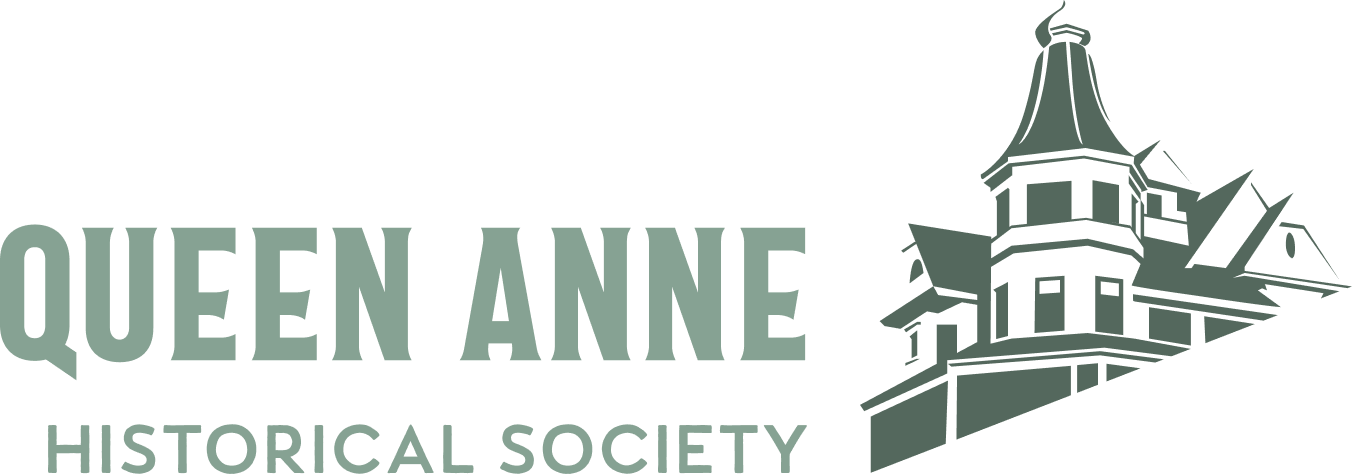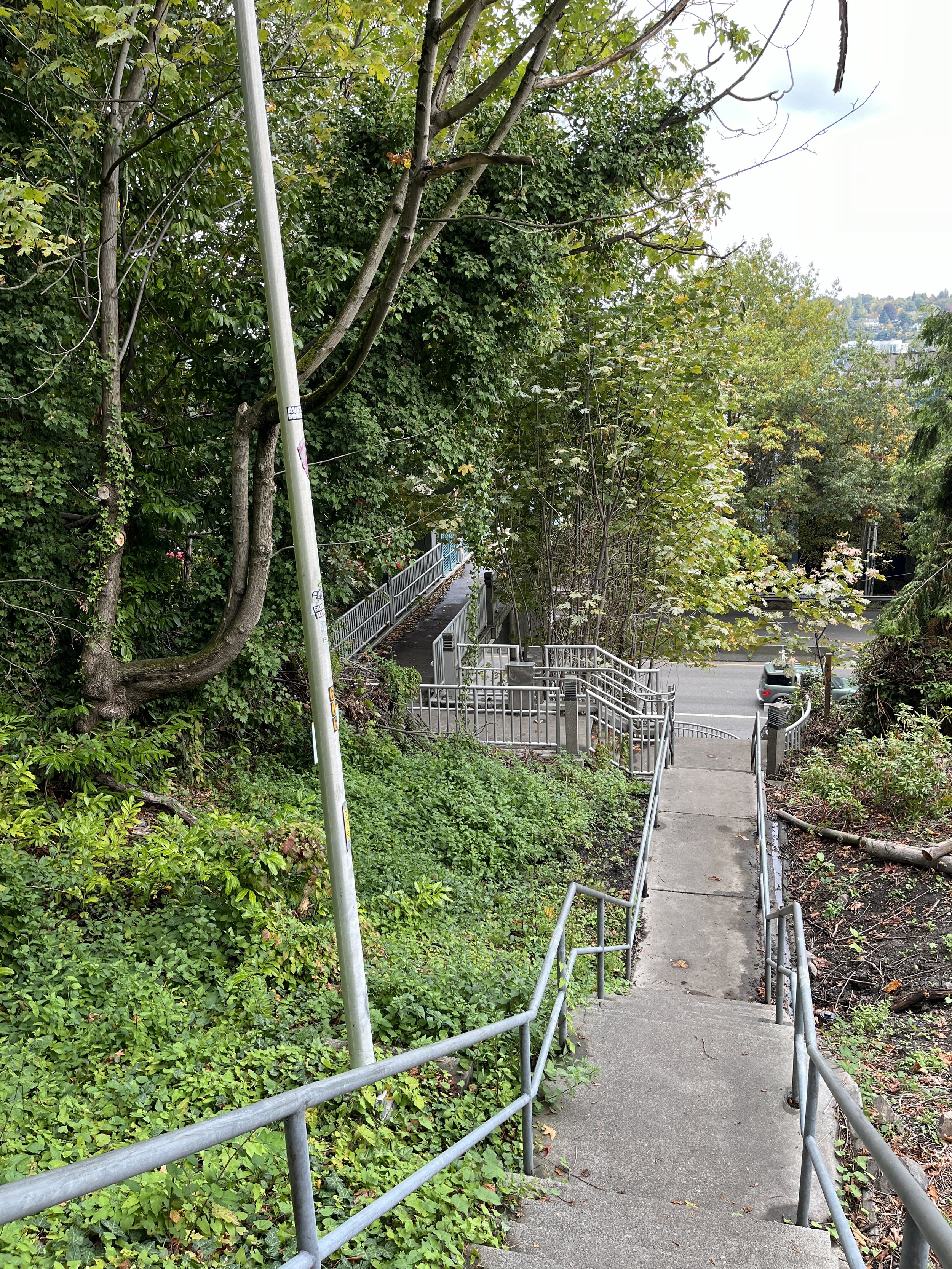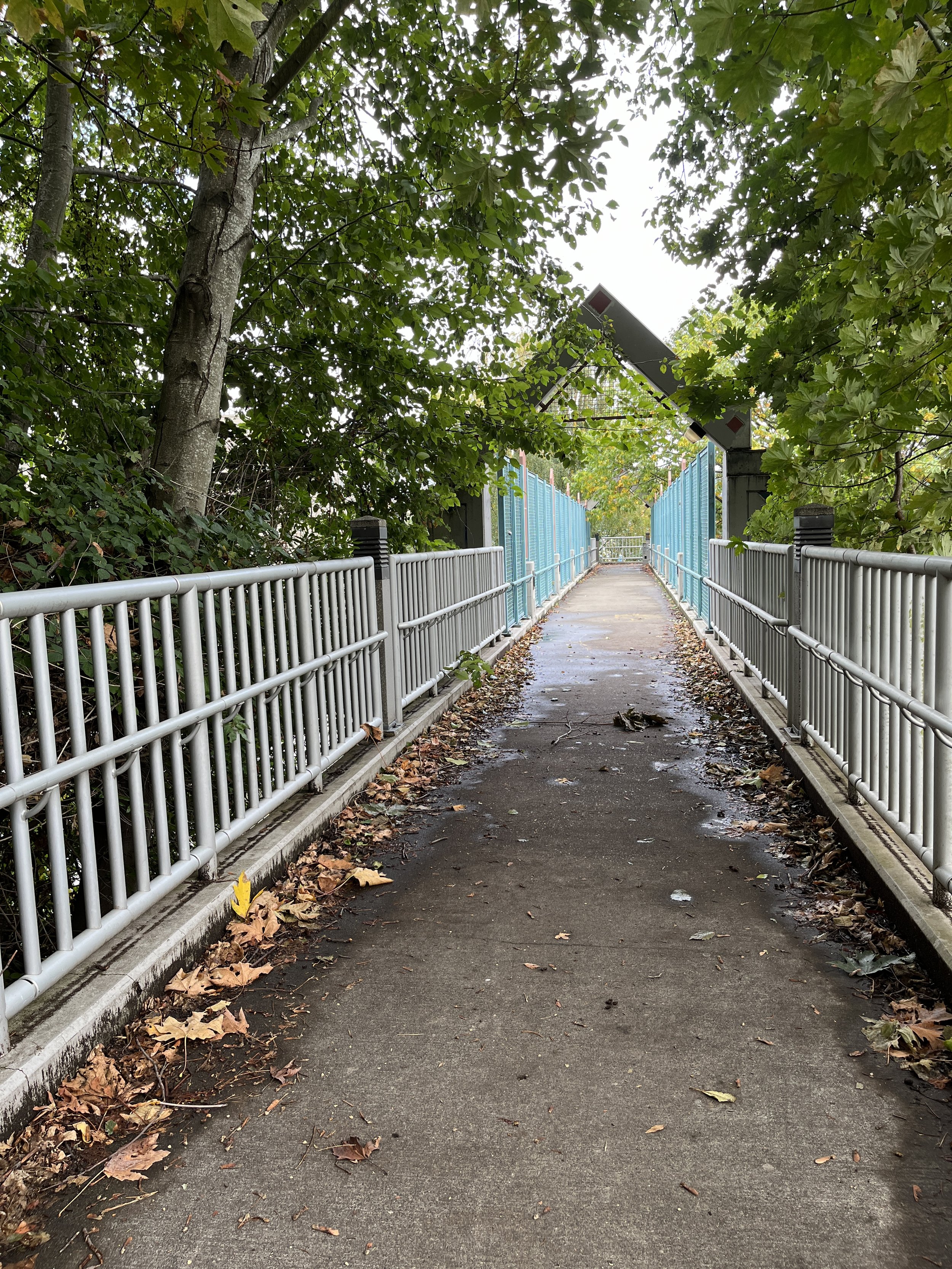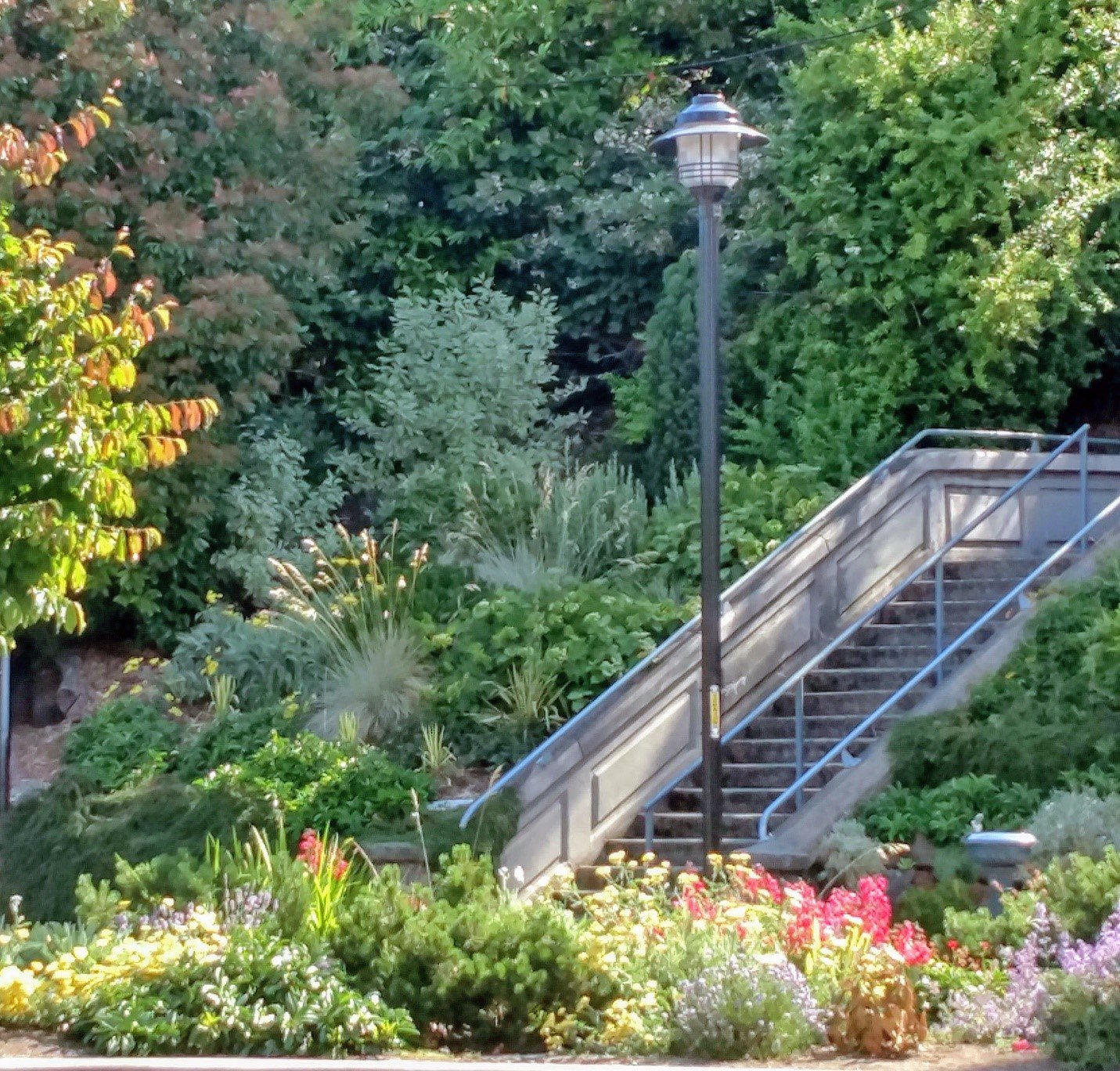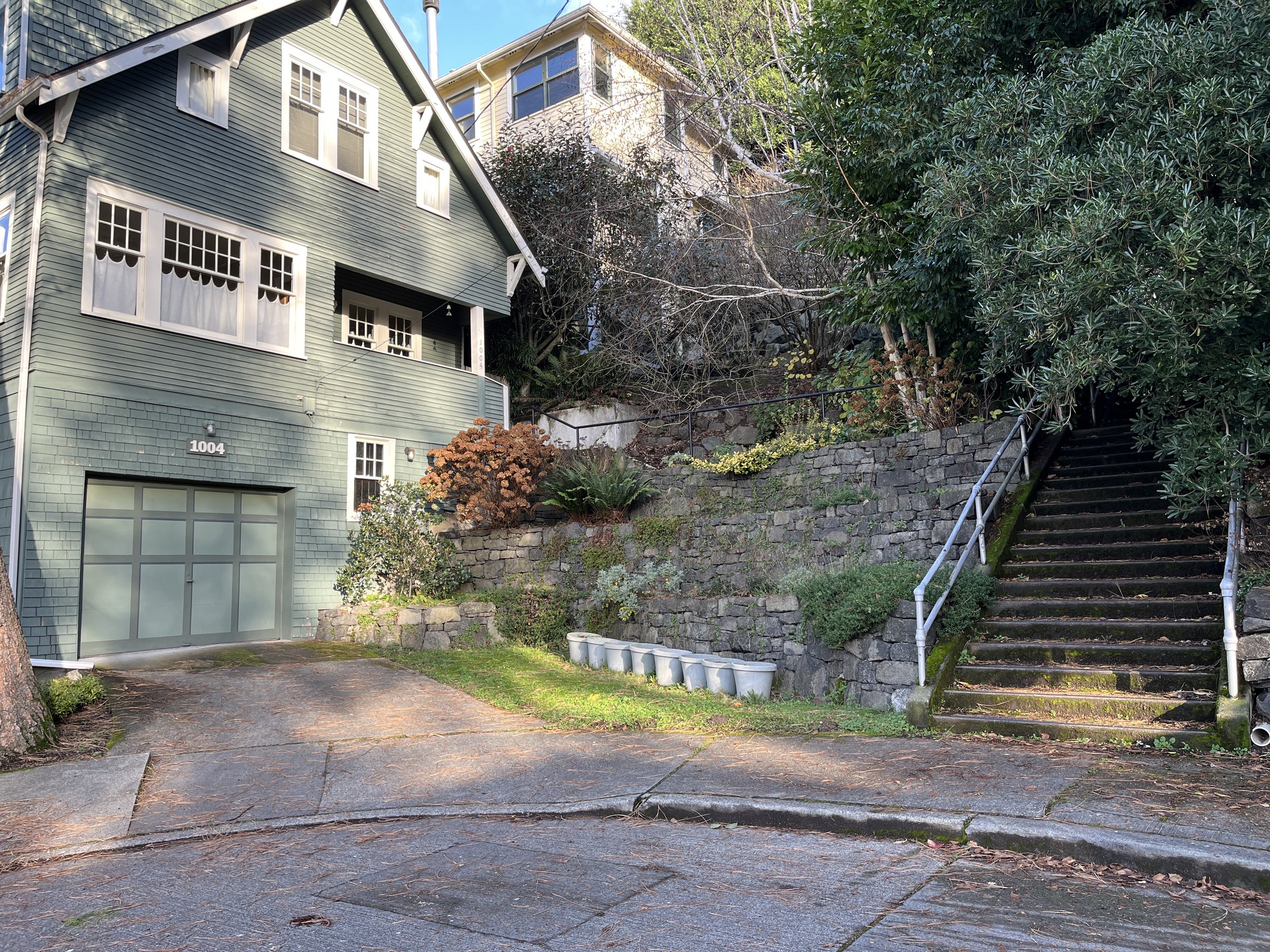Up, Down, All-Around - Discovering Queen Anne
Photos by author in 2024, unless otherwise noted
It sat gathering dust in my desk drawer for years—one of those "I'll get to it soon" things. Then, one day last October, I picked it up, unfolded it, and started a scavenger hunt for the public stairs of Queen Anne. What an adventure! I have lived on Queen Anne for 42 years (is that possible?), but this romp has led me to corners never seen, streets never walked, and stories never known. Long, short, manicured, wild, wooly, old, new, grand, hidden, curious—if you live on or walk Queen Anne, you know about these gems clustered across the steeper sections of our hill.
Queen Anne boasts over 120 public stairways, more than any other Seattle neighborhood, and I have walked them all (except two that are no longer accessible). In 2008, Thomas Horton, a local architect, Queen Anne resident, and urban hiker created a treasure: Map of the (Oft) Pedestrian Public Stairs of Queen Anne Hill. This was my guide and it is still available from the Queen Anne Book Company. Thomas Horton, with the assistance of 4Culture also created a website Queen Anne Public Stairs (1), and coordinated with the Queen Anne Historical Society to assist in making the map accessible. (2)
Early transportation on Queen Anne often relied on a series of trolleys that began service on Queen Anne in 1902. (3) However, these trolleys had to be accessed by foot, leading to the necessity for steps. The earliest stairs were wooden, but over the years, have been replaced with concrete. The oldest public stairs in Seattle are right here on Queen Anne. There is a bit of confusion on which public stairs are the oldest but according to the Seattle Department of Transportation's Geo Data (4), the oldest, built in 1904, are 42 steps ascending from Ward St at Warren Ave N.
Seattle’s oldest stairs
The runner-up, built in 1905, is on 6th Ave W connecting Highland and Comstock.
Then -
Stairs looking north on 6th Ave W, Seattle Municipal Archive, 1912.
Now -
The same stairs barely visible through the foliage.
Now onto the Grande Dame of Queen Anne Stairs: the kissing steps. It had been years since I last walked these steps, so "hidden" are they that I had forgotten them. Rediscovering these beautiful 86 steps was a delightful treat. As described in Seattle Stairway Walks, "These elegantly curving steps, built in 1909, exhibit all the hallmarks of the golden era of stair construction in Seattle…They qualify as "hidden" because you can't see them from the top or from the bottom." (5)
Grand Dame Stairs
Undeniably, Queen Anne's most architecturally beautiful and equally impressive engineering feat is the Willcox Wall. Designed by Walter Willcox and completed in 1916 (6), it required an immense amount of soil and concrete to extend the originally narrow road to its current width which includes cantilevering portions of the sidewalk over the ground below. This most beloved and popular promenade along 7th and 8th Aves W is grand from the street but to truly appreciate the beauty and scope of engineering, take any of the stairs descending to the west.
Willcox Wall during construction, Seattle Municipal Archive, 1914.
Willcox wall - 8th Ave W at W Garfield looking south
Built in 1929 in Kinnear Park, this building serves as part "comfort station", part viewing platform. The steps lead to a rooftop patio with impressive views to the south and west. "Designed in the Art Deco style, this comfort station was one of a series of new comfort stations constructed in Seattle parks in the late 1920s and early 1930s. Located in prominent parks in fashionable residential neighborhoods, these comfort stations were notable for their attractive designs in various period revivals as well as modern styles. Construction of these comfort stations … followed a policy to build only structures that would be pleasing in design and permanent in nature." (7)
Kinnear Park comfort station and stairs
By the mid-1940s, with the automobile's popularity and adoption, the trolley system was no longer sustainable and was subsequently decommissioned. A thrifty and forward-thinking city engineer stockpiled the tracks and concrete spacers, many of which were cleverly repurposed as handrail posts and steps. According to Thomas Horton, "To this day Seattle still has a stockpile of old rails and concrete slabs". (8) I was determined to find this configuration still in use, but the City of Seattle has been even more determined to replace them all with new stairs and handrails that met safety standards. This is the only example I could find, located on an abandoned trail down the east side of Queen Anne.
Abandoned handrail with trolley rail post
The Wheeler steps, a series of seven stairways traversing the west slope, are a pulse-racing 256 steps in total.
One section of the Wheeler Stairs
At least one of these sections was built in 1939-1940 by the WPA, while others were constructed under the Bridging the Gap (2007-2015) and Move Seattle (2015-2024) levies.
Section of Wheeler stairs built in 1939-1940 by WPA
Section of Wheeler Stairs funded by Bridging the Gap
Section of Wheeler Stairs funded by Move Seattle
Near the Wheeler stairs are the dizzyingly steep 71 steps that connect 11th Ave W to Gilman Dr W below.
Stairs looking down to Gilman Dr W
No account of the Stairs of Queen Anne would be complete without a visit to the Haunted Stairs at W Boston Street. Local lore tells of a young woman who, in 1921, fell to her death on the rickety wooden stairs while on her way to meet her fiancé. The stairs were soon replaced with stone. Several years later, another young woman traversing the same stairs heard a whisper, "Turn back now!". She heeded the ghostly warning, retracing her steps, only to watch the newly built stone stairs slide down the hill.
I expected dark, creaky, malevolent stairs with a cold draft on a warm day. Much to my chagrin, they are now a short run of concrete steps, complete with a handrail (a bit scary) and an expanding planting at the bottom. No ghosts!
Haunted stairs, sans ghost
Lest we think this is all distant history, new stairs have been added over the years. One of the most visible infrastructure improvements is the Galer Street overpass spanning Aurora. This ambitious project includes the bridge and a series of six stairways with a whopping 526 steps in total—the longest in the city. Built in 1991-1993, the project gracefully connects Queen Anne to Lake Union.
Galer St Stairs
Galer St Bridge over Aurora Ave
Welcome to "Ruffner Wilds," completed in 2007 and a personal favorite of mine. This serene walk descends between 14th and 13th Aves W, surrounded by timber bamboo that creates a Zen refuge. It is 107 steps through a sliver of Japanese bamboo forest hidden right here on Queen Anne.
Ruffner Wilds Stairs
One of our better-known, loved, and cared-for stairways, the Galer Crown (Galer-Queen Anne) Stairs, sits at the top of the Counter Balance just south of Olympia Pizza. If you lived in or frequented Queen Anne before 2005, you will remember how dreary Queen Anne Ave looked—weedy and unkempt. Thanks to Picture Perfect Queen Anne (PPQA) volunteers, along with a Department of Neighborhoods grant and the City's tree planting program, the public spaces along the avenue have been revitalized, making a stroll down the street a much more pleasant experience. Our heartfelt gratitude goes to PPQA for their past and present efforts (they continue the maintenance). The plantings along either side of the Galer Crown Stairs were completely renovated as seen in these photos.
Galer Crown Stairs-before, Photo by Kat King, 2004.
Galer Crown Stairs-after, Photo by Kat King, date unknown.
On the subject of well-tended gardens, Bacchus holds court over these beautiful plantings that border the stairs connecting 10th and 11th Aves W at Armour thanks to the neighbors there.
Statue of Bacchus, the Greek god of wine, festivity, and theater
Stairs at 10th Ave W, looking east, at Armour
To conclude our adventure, let's highlight one of the quirkiest stairways. This city stairway is the only access to the front door of a unique house located on W Newell St.
Stairs at W Newell St
The Stairs of Queen Anne—whether enchanting, heart-racing, dizzying, scary, amusing, historic or contemporary—are a treasure and a glimpse into the character of Queen Anne. The next time you encounter a staircase, take a moment to climb it. You might discover a place you've never been before.
Footnotes:
(1) Queen Anne Public Stairs, Thomas Horton – website no longer maintained, 2008
(2) https://queenannenews.com/news/2014/mar/03/revised-qa-stairs-map-available-this-month/
(3) Queen Anne Yesterday & Today, Queen Anne Historical Society, 2020.
(5) Seattle Stairway Walks, Jake Jaramillo & Cathy Jaramillo, 2013
(6) Willcox Walls – 7th Ave W & 8th Ave W, Queen Anne Historical Society, 2012
(7) Seattle Department of Parks. Annual report/Department of Parks. Seattle, WA: 1909-1955.
https://web.seattle.gov/DPD/HistoricalSite/QueryResult.aspx?ID=1688878765
(8) Queen Anne Public Stairs-Trolley Rail, Thomas Horton.
